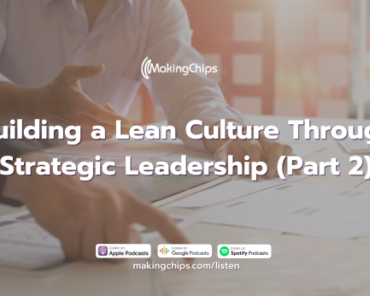By Joel Miller
MC043 – How to implement ERP (Enterprise Resource Management) in your manufacturing shop wisely
Podcast: Play in new window | Download
Get out your scuba gear, we’re taking a deep dive today! In this episode of Making Chips Jason and Jim are with a guest, John Berard who has a ton of experience in the research and implementation of ERP (Enterprise Resource Management) systems in manufacturing businesses. John’s got a lot of actionable advice for both the small and larger size manufacturing operations about how to determine your ERP needs, how to find and choose and ERP system, how much budget to set aside for the purchase, and what to expect during the implementation and transition period. This episode could help you take that bold step into a more streamlined way of managing your machine shop.
What is an Enterprise Resource Planning system? (ERP)
An ERP is business management software—typically a suite of integrated applications—that a company can use to collect, store, manage and interpret data from many business activities. It might and probably will include other software systems (known as MRP – Materials Resource Planning systems). Some of the things a good ERP may include are systems that track product planning and costs, manufacturing or service delivery, marketing and sales, inventory management, and shipping and payment. It sounds complex but once you have the right ERP solution chosen and implemented in your business, the long term benefit is cash savings on a daily basis. Find out more about ERP systems from our guest today, John Berard as he discusses the topic with Jim and Jason.
How does an ERP system work?
ERP provides an integrated view of your most essential business processes, allowing you to see a “big picture” of what’s going on in your manufacturing operation from many different levels. It also allows you to “drill down” into those broad categories to see the details you need to make better business decisions. A good ERP often does this work for you in real-time, using common databases maintained by a database management system integrated into the program. The applications that are a part of the system share information across the various departments of your operation (manufacturing, purchasing, sales, accounting, etc.). Hear the benefits your business could derive from implementing a good ERP system by listening in to this conversation.
How should you start the process of finding and implementing a good ERP system?
John Berard, today’s guest on Making Chips, recommends that the owner of the manufacturing company NOT try to make this decision on his own. It’s vital that everyone involved in the collection and use of data within your company be a part of the process. The combined knowledge of the particular facets of your business will enable you to make accurate and helpful decisions about what kind of functionality you’ll need from an ERP system. John’s got some very practical suggestions about how to stage and manage those conversations and how to go about finding the right company with the right solution for you. If you’re considering an upgrade to an ERP system, the basics John shares could save you tons of time and money. Be sure to listen.
There are 3 main ways you can mess up the implementation of your ERP system.
John Berard has seen many implementations of ERP software and has some “horror stories” about how you can mess it up. #1 – Ignore your people. You have to listen to those you’ve entrusted with the areas of your business. They will have the information and hands-on experience to help you make a good decision. #2 – You want to listen to your peers who have done an ERP implementation in the past. They will have “lessons learned” that will be of great benefit to you, so don’t let the bells and whistles of a fancy ERP system and a smooth talking salesman lead you down a path that a peer is saying may not be the best. #3 – If you have a gut feeling that the software consultant is not serving your best interests by highlighting the bells and whistles of the software that don’t really apply to your operation, listen to that feeling. You don’t want to make a huge mistake on this crucial decision. Find out more from John’s experience on this episode of Making Chips.
Outline of this episode
- [1:05] Welcome and introduction to this episode with John Berard.
- [3:27] What is the direct function of a ERP (Enterprise Resource Planning tool) or MRP (Materials Resource Planning tool) system?
- [6:00] How do you bring all the “islands” of MRP systems together under one system?
- [9:05] An example: a small CNC machine shop, business is good, how do they formalize a plan to bring everything together?
- [12:13] Success stories of how this transition works.
- [14:15] Finding an ERP software solution to fit your needs.
- [15:51] A disaster in ERP implementation solutions and 3 ways you can mess up the transition.
- [17:28] Avoiding the bells and whistles the salesman might point out so you can apply the system to your typical jobs.
- [19:37] What should a small manufacturer budget for this type of software?
- [21:31] How long does it take to implement these software solutions?
- [21:56] John’s advice to those considering implementing an ERP solution for your company.
Links mentioned in this episode
John’s podcast: http://www.podcastformakers.com/
Or call us at 312-725-0245




